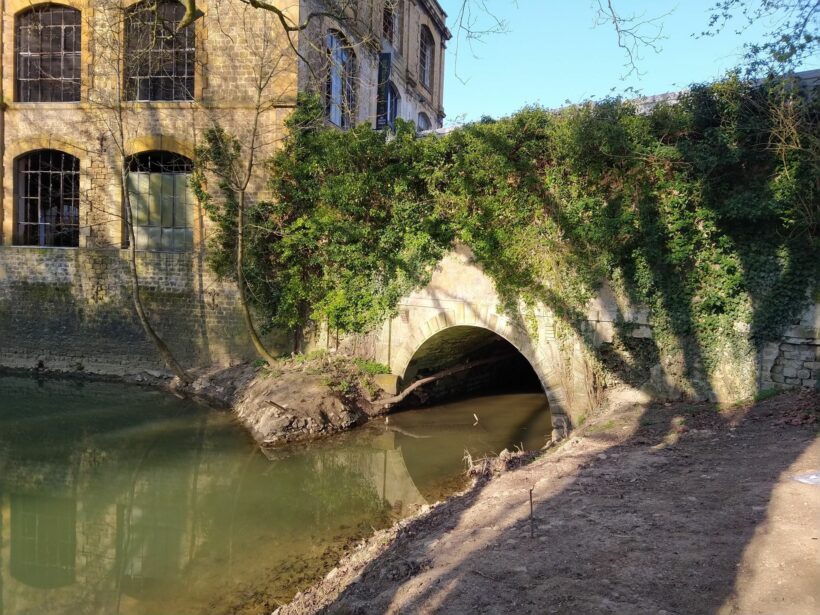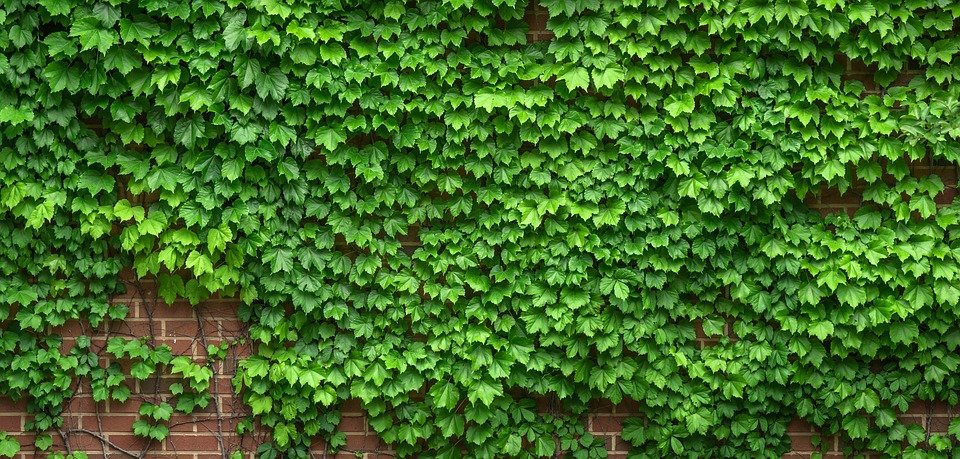With the release of the second part of the 6th report of the IPCC last month, it is a new alert that scientists are raising concerning the global warming. But how to fight on a personal scale against pollution and temperature increase, especially when you live in an urban environment? Today, we present to you the greening of facades, a solution that has proven itself and which deserves to be more widespread in our cities.
A quick history of facade greening
With his first green wall presented at the Cité des Sciences et de l'Industrie de la Villette in 1986, then its patent filed in 1988, Patrick White is considered the inventor of green wall as we know it today.
In reality, this concept, inspired by nature itself, has existed for several centuries. As soon as nature regains its rights, it tends to cover concrete and other building materials. We will think in particular of the ruins of Angkor absorbed by the forest in Cambodia, or even of these abandoned cities in which vegetation is gradually invading our facilities.
Rather, it is the technique of placing plants on a horticultural felt holder which is the interest of the green wall of Patrick Blanc.
What are the benefits of a green wall?
We can first mention the aesthetic side, although it is not the most significant ecologically speaking. Many species of plants can be used in the layout of what can constitute real vertical gardens, giving a certain charm to the building they cover. Be careful, however, not to want to do too much, it is still advisable to choose species in your area and adapted to your climate during your work. The maintenance of your wall will be facilitated and its lifespan increased.
Then come the ecological issues.
The first being the reduction of heat islands in the towns. This is a localized rise in temperature caused by the absence of vegetation. By bringing plants back into town and more particularly on your facade, you can contribute to lower the room temperature. Combined with a solution ofexterior insulation the green wall thus created will also contribute to cooling your house in summer, without making it more humid in winter, provided that the green wall is properly made.
Another essential advantage of revegetation: fight against pollution or rather pollution! Plants have the ability to absorb volatile toxic particles present in the air. In particular the particles of Benzene, Toluene, Ethyl-Benzene and Xylenes. They also allow the absorption of part of the CO2 emissions! Thus plants can be advantageously used for fight against indoor pollution.
In 2012, for example, a study was conducted in Lyon by Anne Rondeau as part of her doctoral thesis.
Recent research also shows interest in plant walls in aquaponics
How to set up a green wall or facade?
For a durable and efficient installation, several essential elements will have to be put in place. First of all it will be necessary to determine if the plants will start from the bottom to climb along the wall or the facade (climbing plants) or if the green wall will be staged over the entire surface of the building such as in the model proposed by Patrick White. For a simple wall covered with climbing plants, it will be metal wires fixed to the wall that will allow the guidance of the different plants. It is in the case of vertical green walls that things become more complex.
In the case of the stepped wall, you will need a hanging structure such as a steel structure or stainless steel cages. On this surface it will then be necessary to hold a base or a substrate. There are several that each have different characteristics and therefore different uses. In the case of the system invented by Patrick Blanc, a double layer of polyamide-based felt is used. The plants slip between the two layers of felt, in pockets which are then stapled.
The following video demonstrates the implementation of this technique:
For plants to survive and grow properly, a irrigation system should be incorporated. It is preferable to use a closed circuit, saving water. This type of circuit is called a system hydroponics, it can be quite technical to achieve. This is why it is still possible to use an organic substrate, which, if it does not save water, may in some cases prove to be absorbent enough to avoid frequent watering. The retention of rainwater is also variable depending on the substrate used.
Good to know: it is advisable to leave a layer of air at the back of the structure, between the wall and the installation to prevent the plants from rotting.
Each medium has its own characteristics
For textile supports, a distinction is made between aquanappe felt, also found under the name of NFT fiber, and geotextile felt. Both, however, have similar characteristics. They are inert, ie they are not biodegradable, and rot-proof which prevents them from rotting. It is possible that a nylon weft is incorporated therein, making it possible to increase its solidity and therefore its durability. Felts also easily retain moisture, which is an important feature to consider when setting up the irrigation system.
On the side of the substrates, a great variability of supports can be found. Rock wool, also used for insulation, is found here in the form of "loaves" to be incorporated most often in a system of metal lockers. For green facades, the rock wool must be as dense as possible to allow it to retain the plants.
We will also find mixtures of peat and coconut fiber, or even sphagnum. However, it is important to remember that green walls composed of these organic substrates will often have a shorter lifespan than those made using felts. Their water retention is often too high or too low, which complicates the management of plant watering.
The importance of maintenance!
You have finished your wall or your green facade, you are completely satisfied with the result... However, your adventure is not over yet!
So that your little piece of paradise does not turn into an invasive chore, you will need maintain it regularly. Prune the fastest growing plants to prevent them from invading the entire facade to the detriment of the others. Replace the most fragile ones that would not have resisted over time, add fertilizer if necessary. So many essential tasks so that your green wall remains an asset for biodiversity while avoiding the situation described in the following video:
But also green roofs and interior walls
Once started in depollution using plants, it is difficult to stop at the facade or a wall in your garden... And that's good!
Indeed, it is possible to set up a vegetalized roof which also has an interest in the retention of rainwater as well as for the preservation of freshness of a building in the summer. This technique is suitable for both a flat roof and a sloping roof. However, it is true that its installation is easier to achieve if it is thought out during the construction of the house.
The green wall can also be invited to inside your home to fight indoor pollution. It will have interesting effects against pollution with toxic particles linked to the use of household products, room fragrances and even from thefurnishing, an indoor green wall can thus maintaining your health and that of your loved ones.
Be careful, however, when choosing the location of your green wall. Most plants absorb CO2 during the day, but release it at night. It is therefore better to avoid installing them close to where you sleep.


